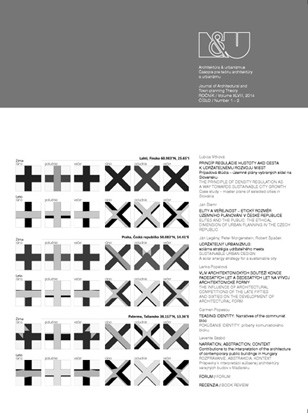PRINCÍP REGULÁCIE HUSTOTY AKO CESTA K UDRŽATEĽNÉMU ROZVOJU MIEST. Prípadová štúdia – územné plány vybraných sídel na Slovensku
THE PRINCIPLE OF DENSITY REGULATION AS A WAY TOWARDS SUSTAINABLE CITY GROWTH. Case study – master plans of selected cities in Slovakia
Author(s): Ľubica VitkováSubject(s): Cultural Essay, Political Essay, Societal Essay
Published by: Historický ústav SAV, v. v. i.
Keywords: monofunctional development of city suburbs, potential of innercity, concept of compact city
Summary/Abstract: Cities in Slovakia have undergone significant expansion since the year 1990. This expansion is manifested in the growth of built-up areas, mainly in city suburbs, in the form of monofunctional development of individual housing units, construction of large industrial and logistics parks and massive commercial centers. All of the developments mentioned above are characterised by enormous “land-consumption”, even though there is still a large land-use potential inside the cities. This potential is mainly present in areas which have lost their previous function. Very little attention is being paid to this problem in Slovakia, where no targeted and periodic analysis of inner-city built-up areas is underway, nor any valorisation of potentials and possible land-use of empty inner-city areas. A further problem is that areas indicated for new development in city master plans are generated on the basis of the visions or hypothetical investments of developers, instead of real needs and sustainable forms of urban growth. One of the principles of land conservation and effective city operation is the application of sustainable forms of city development. A tried and tested form of sustainable city development is the concept of the compact city, achieved by intensification of the existing urban fabric, use of available areas inside the city and limited construction outside the boundaries. Optimised density of urban structures is an integral part of conceiving sustainable city growth. To realise the listed principles, urban fabric density should meet certain parameters. An optimal representation of these parameters could be the interval of minimal and maximal urban fabric density, which is applicable to two contradictory tendencies present in Slovakia in the development of the natural density of the urban fabric. One of them is inadequate urban fabric density in the suburbs, the other one is non-conceptual maximisation of density in some parts of the city. These very different density standards started to appear in the end of first decade of the new millennium in Slovakia, during the peak of the building boom, characterised by “land privatization”. And the character of master plans was unprepared for these tendencies. In the following study, I will try to evaluate the current state of the application of sustainable city growth principles in Slovakia through an analysis of master plans, which are the main mechanisms of regulation of urban development, of selected cities. The study emphasises the evaluation of the approach to density regulation, rate of land-use of selected cities, their built-up areas as well as their proposed development areas. One of the goals of this paper is to analyse the proposed “land-use” of free and transformable areas inside the city compared to proposed “land-consumption” outside the city. This paper also evaluates applications of land-use indicators that define the future density of the urban fabric, in the scope of examined mast
Journal: Architektúra & Urbanizmus
- Issue Year: 48/2014
- Issue No: 1-2
- Page Range: 2 -23
- Page Count: 22
- Language: Slovak

